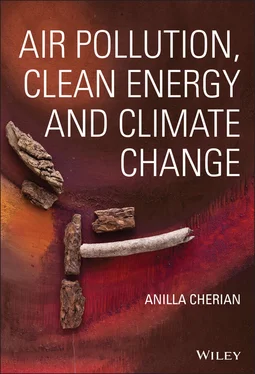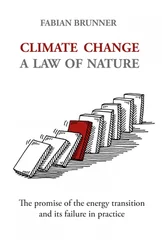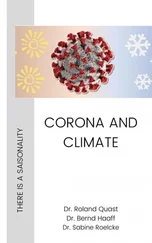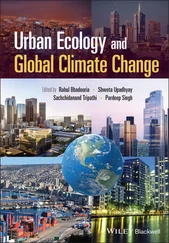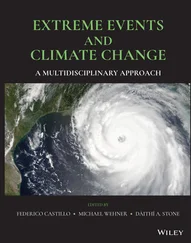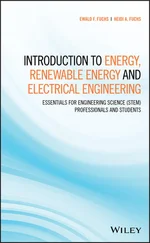Anilla Cherian - Air Pollution, Clean Energy and Climate Change
Здесь есть возможность читать онлайн «Anilla Cherian - Air Pollution, Clean Energy and Climate Change» — ознакомительный отрывок электронной книги совершенно бесплатно, а после прочтения отрывка купить полную версию. В некоторых случаях можно слушать аудио, скачать через торрент в формате fb2 и присутствует краткое содержание. Жанр: unrecognised, на английском языке. Описание произведения, (предисловие) а так же отзывы посетителей доступны на портале библиотеки ЛибКат.
- Название:Air Pollution, Clean Energy and Climate Change
- Автор:
- Жанр:
- Год:неизвестен
- ISBN:нет данных
- Рейтинг книги:5 / 5. Голосов: 1
-
Избранное:Добавить в избранное
- Отзывы:
-
Ваша оценка:
- 100
- 1
- 2
- 3
- 4
- 5
Air Pollution, Clean Energy and Climate Change: краткое содержание, описание и аннотация
Предлагаем к чтению аннотацию, описание, краткое содержание или предисловие (зависит от того, что написал сам автор книги «Air Pollution, Clean Energy and Climate Change»). Если вы не нашли необходимую информацию о книге — напишите в комментариях, мы постараемся отыскать её.
to leave no one behind
Air Pollution, Clean Energy and Climate Change
Energy and Global Climate Change
Air Pollution, Clean Energy and Climate Change — читать онлайн ознакомительный отрывок
Ниже представлен текст книги, разбитый по страницам. Система сохранения места последней прочитанной страницы, позволяет с удобством читать онлайн бесплатно книгу «Air Pollution, Clean Energy and Climate Change», без необходимости каждый раз заново искать на чём Вы остановились. Поставьте закладку, и сможете в любой момент перейти на страницу, на которой закончили чтение.
Интервал:
Закладка:
Intergovernmental climate negotiations have not yielded conclusive agreement on key elements related to the PA related to climate adaptation needs of the smallest and poorest countries. The return to the PA negotiations by the second‐largest aggregate emitter sent a clear message, but the question that persists is whether the textual confines of the two‐week‐long cycle of intergovernmental negotiations will suffice in terms of integrated action clean air and clean energy for all? Tense and protracted climate negotiations have been the norm for decades. The final, plenary session of the 2018 24th UN Climate Conference in Poland had to be postponed no less than six times. In the waning days of 2019, climate activists across the world were left disappointed that the 25th UN annual climate negotiations meeting ended in utter disarray. Despite extending the two‐week Madrid conference for an additional two days, and after 25 consecutive annual climate conferences convened in diverse cities, countries failed to deliver essential outcomes such as setting a rulebook for the PA and designing a global carbon market. In spite of extending the two‐week 2019 25th COP in Madrid, Parties to the PA could only agree to a ‘watered‐down text’, which ‘reflects a failure to agree on the key outcomes that were needed at the summit: setting a rulebook for the Paris Agreement and designing a global carbon market’ (Keating 2019). In its summary of COP‐25, the UNFCCC Secretariat sounded hopeful that: ‘Despite Parties falling short of agreeing on issues related to Article 6 of the Paris Agreement and on the launch of cooperative instruments – essential tools for enhancing the efficiency of mitigation efforts and increasing finance for adaptation – most technical issues relating to the market‐based and non‐market approaches under Article 6 were resolved in 2019. COP 26 will be tasked with sealing the deal on Article 6’ (UNFCCC 2020, p. 24).
The idea that comprehensive action on climate change and clean energy for the poorest and most vulnerable can be catalyzed by well‐intentioned celebrities who fly around imploring the world, or by the glacial pace of nation‐state‐driven textually based negotiations, while exposure to toxic levels of fossil fuel related air pollution for those cannot afford air filters/purifiers continue unabated is hard to justify. Decades ago, the UN sustainable development community universally agreed on the primacy of poverty eradication as a global goal and reaffirmed the same in both the 2030 SDA and the PA. The UN‐led global community has to face up to the facts that action on climate change needs to first and foremost address the needs of the poor and vulnerable, and that avoiding linked action to curb fossil fuel related air pollution contravenes the logic of its ambitious SDA. Today, it is hard to deny that our shared human propensity to pollute extends into the air we breathe, the food and water we consume, and is especially pernicious for millions who live at the intersection between energy related air pollution and adverse climatic impacts. It is precisely this linkage between inefficient and polluting energy sources and air pollution that merits urgent attention not just by the UN member states and organizations focused on the SDA and PA but also by NNSAs including the local and municipal governments, civil society groups, the energy private sector, as well as city and regionally based entities.
The UN’s SDA is anchored by 17 SDGs, including two entirely separate goals on affordable and clean energy (SDG 7) and climate change (SDG 13) (see Figure 1.6). What is unambiguous is that the SDGs and the PA both make poverty eradication by 2030 a central priority. The SDA’s ‘pledge that no one will be left behind’ is expressly focused on poverty eradication, but it includes two separate SDGs on sustainable energy and climate change: SDG 7: ‘Ensure access to affordable, reliable, sustainable and modern energy for all’ (SDG 7); and SDG 13: ‘Take urgent action to combat climate change and its impacts’. What makes the SDA and the PA historically unique is that they share a priority on poverty eradication and are intended to be implemented in an integrated manner. Together, these two global agreements were envisaged to dramatically improve human well‐being and sustainable development in all countries. But the problem is that a detailed examination of two separate intergovernmental negotiating tracks on energy for sustainable development and climate change that were used to arrive at the SDGs and the PA revealed that the existence of segregated policy goals and targets on sustainable energy and climate change and an overall lack of integrated action on energy related air pollution (Cherian 2015).

Figure 1.6 SDGS in the UN’s 2030 sustainable development agenda.
Source: UN website, About the Sustainable Development Goals (2021).
With the 2030 full implementation deadline looming for the SDGs and the PA, it is time to ask what is being done in terms of integrated action to curb SLCPs and reduce public health and morbidity burdens associated with energy related air pollution exposure? Both the PA and the SDGs are voluntary agreements with no legal penalties or obligations for individual countries to meet commitments. It is time to ask whether UN member states should be the sole arbiters of global climate goals based on tense intergovernmental textually driven negotiations that have to date not considered actions to curb SLCPs and toxic levels of air pollution. The role of NNSAs – including local/municipal governments and the private sector – are arguably important in addressing the enormity of the challenges associated with intersecting challenges of climate change, lack of access to clean energy and air pollution. The gravity of the linked crises of climate change and air pollution crises necessitates looking beyond segregated UN policy and goal silos on clean energy and climate change and asking:
How exactly has air pollution been addressed at the global and regional level within the UN’s broad SDA?
Is there an integrated global policy nexus on clean air, clean energy and climate action that is responsive to the needs of those most impacted by energy related air pollution, lack of access to clean energy and climate vulnerabilities?
What is the role for NNSA partnerships including regional and city‐based modalities that integrate action on clean air, clean energy and climate challenges in countries like India where the scale and scope of increasing access to clean energy and curbing air pollution intersect for millions of lives?
The identification of air pollution as the world’s single largest environmental health risk by the WHO merits a careful examination as to how globally responsive action on air pollution has been integrated with SDG 7 (increasing access to clean energy for all) and SDG 13 (climate). Are segregated policy goals on sustainable energy for all (SDG 7), sustainable cities and communities (SDG 11) and climate change (SDG 13) adequately positioned to address the inequitable health burdens imposed on those who have contributed the least in terms of per capita GHG emissions but who rely heavily on polluting solid fuels for their basic needs? The year 2020 was billed as the year for conclusive UN agreement on the PA’s modalities. But, the COVID‐19 global pandemic revealed a less than palatable global truth, namely, a collective global failure or, more euphemistically put, a global disconnect between the early identification of climate change within the context of poverty eradication and the growing public health crisis of air pollution, both of which disproportionately and negatively impact on poorer households, communities and cities.
Читать дальшеИнтервал:
Закладка:
Похожие книги на «Air Pollution, Clean Energy and Climate Change»
Представляем Вашему вниманию похожие книги на «Air Pollution, Clean Energy and Climate Change» списком для выбора. Мы отобрали схожую по названию и смыслу литературу в надежде предоставить читателям больше вариантов отыскать новые, интересные, ещё непрочитанные произведения.
Обсуждение, отзывы о книге «Air Pollution, Clean Energy and Climate Change» и просто собственные мнения читателей. Оставьте ваши комментарии, напишите, что Вы думаете о произведении, его смысле или главных героях. Укажите что конкретно понравилось, а что нет, и почему Вы так считаете.
